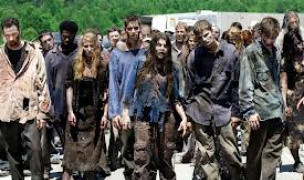 19 Terms
19 TermsHome > Terms > English, UK (UE) > Battle of Ceresole
Battle of Ceresole
The Battle of Ceresole (or Cérisoles) was a battle between the combined forces of Spain and the Holy Roman Empire and a French army during the Italian War of 1542–46. The lengthy engagement took place on 11 April 1544, outside the village of Ceresole d'Alba in the Piedmont region of Italy; the French, under François de Bourbon, Count of Enghien, defeated the Spanish-Imperial army of Alfonso d'Avalos d'Aquino, Marquis del Vasto.
The opening of the war in northern Italy had been marked by the fall of Nice to a combined Franco-Ottoman army in August 1543; meanwhile, Spanish-Imperial forces had advanced from Lombardy towards Turin, which had been left in French hands at the end of the previous war in 1538. By the winter of 1543–44, a stalemate had developed in the Piedmont between the French, under the Sieur de Boutières, and the Imperial army, under d'Avalos. The French position, centred on Turin, reached outward to a series of fortified towns: Pinerolo, Carmagnola, Savigliano, Susa, Moncalieri, Villanova, Chivasso, and a number of others; d'Avalos, meanwhile, controlled a group of fortresses on the periphery of the French territory: Mondovì, Asti, Casale Monferrato, Vercelli, and Ivrea. The two armies occupied themselves primarily with attacking each others' outlying strongholds. Boutières seized San Germano Vercellese, near Vercelli, and laid siege to Ivrea; d'Avalos, meanwhile, captured Carignano, only fifteen miles south of Turin, and proceeded to garrison and fortify it.
Enghien, having learned of the Imperial advance, left a blocking force at Carignano and assembled the remainder of his army at Carmagnola, blocking d'Avalos's route to the besieged city. The French cavalry, shadowing d'Avalos's movements, discovered that the Imperial forces were headed directly for the French position; on 10 April, d'Avalos occupied the village of Ceresole d'Alba, about five miles (8 km) southeast of the French. Enghien's officers urged him to attack immediately, but he was determined to fight on ground of his own choosing; on the morning of 11 April 1544, the French marched from Carmagnola to a position some three miles (5 km) to the southeast and awaited d'Avalos's arrival. Enghien and Montluc felt that the open ground would give the French cavalry a significant tactical advantage. By this point, the French army consisted of around 11,000–13,000 infantry, 600 light cavalry, and 900–1,250 heavy cavalry; Enghien and d'Avalos each had about twenty pieces of artillery. The battle came at a fortunate time for Enghien, as his Swiss troops were—as they had before the Battle of Bicocca—threatening to march home if they were not paid; the news of the impending battle restored some calm to their ranks.
On the northern end of the battlefield, events had unfolded quite differently. Dampierre's cavalry routed Lannoy's company of light horse; the Italians and the contingent from Gruyères, meanwhile, broke and fled—leaving their officers to be killed—without offering any real resistance to the advancing Imperial infantry. As Cardona's infantry moved past the original French line, Enghien descended on it with the entire body of heavy cavalry under his command; the subsequent engagement took place on the reverse slope of the ridge, out of sight of the rest of the battlefield.The news of the landsknechts' defeat reached Cardona's troops at about the same time that it had reached Enghien; the Imperial column turned and retreated back towards its original position. Enghien followed closely with the remainder of his cavalry; he was soon reinforced by a company of Italian mounted arquebusiers, which had been stationed at Racconigi and had started towards the battlefield after hearing the initial artillery exchange. These arquebusiers, dismounting to fire and then remounting, were able to harass the Imperial column sufficiently to slow its retreat. Meanwhile, the French and Swiss infantry of the center, having reached Ceresole, had turned about and returned to the battlefield;
Perhaps as many as half of the Imperial infantry were killed as they were attempting to surrender; the remainder, about 3,150 men, were taken prisoner. A few, including the Baron of Seisneck, who had commanded the German infantry contingents, managed to escape.
Despite the collapse of the Imperial army, the battle proved to be of little strategic significance. At the insistence of Francis I, the French army resumed the siege of Carignano, where Colonna held out for several weeks. Soon after the city's surrender, Enghien was forced to send twenty-three companies of Italian and Gascon infantry—and nearly half his heavy cavalry—to Picardy, which had been invaded by Charles V. Left without a real army, Enghien was unable to capture Milan. D'Avalos, meanwhile, routed a fresh force of Italian infantry under Pietro Strozzi and the Count of Pitigliano at the Battle of Serravalle. The end of the war saw a return to the status quo in northern Italy.
- Part of Speech: proper noun
- Synonym(s):
- Blossary:
- Industry/Domain: History
- Category: European history
- Company:
- Product:
- Acronym-Abbreviation:
Other Languages:
Member comments
Terms in the News
Featured Terms
phylum placozoa
Macroscopic, flattened marine animals, composed of ventral and dorsal epithelial layers enclosing ...
phylum cnidaria
Cnidarians. Hydras, hydroids, jellyfish, sea anemones, and corals. Free-swimming or sessile, with ...
share a term with millions
Share a term with millions of users around the world and increase your online visibility.Share a ...
oak
Genus native to the Northern Hemisphere with spirally arranged leaves, catkins for flowers and ...
Everest
The last but not least mount Everest. The Earth's highest mountain, with a peak at 8,848 metres ...
aglaonema
Genus of about 20 species of usually rhizomatous, evergreen perennials from tropical forest in Asia. ...
Robojelly
Robojelly is a hydrogen-powered robot desgined in the United States that moves through the water ...
Ferdinand Porsche
Ferdinand Porsche (3 September 1875 – 30 January 1951) was an Austrian-German automotive engineer ...
Marzieh Afkham
Marzieh Afkham, who is the country’s first foreign ministry spokeswoman, will head a mission in east ...
define1
Share a term with millions of users around the world and increase your online visibility.Share a ...
Contributor
Featured blossaries
Browers Terms By Category
- Wine bottles(1)
- Soft drink bottles(1)
- Beer bottles(1)
Glass packaging(3) Terms
- Chocolate(453)
- Hard candy(22)
- Gum(14)
- Gummies(9)
- Lollies(8)
- Caramels(6)
Candy & confectionary(525) Terms
- Investment banking(1768)
- Personal banking(1136)
- General banking(390)
- Mergers & acquisitions(316)
- Mortgage(171)
- Initial public offering(137)
Banking(4013) Terms
- Journalism(537)
- Newspaper(79)
- Investigative journalism(44)
News service(660) Terms
- Manufactured fibers(1805)
- Fabric(212)
- Sewing(201)
- Fibers & stitching(53)





